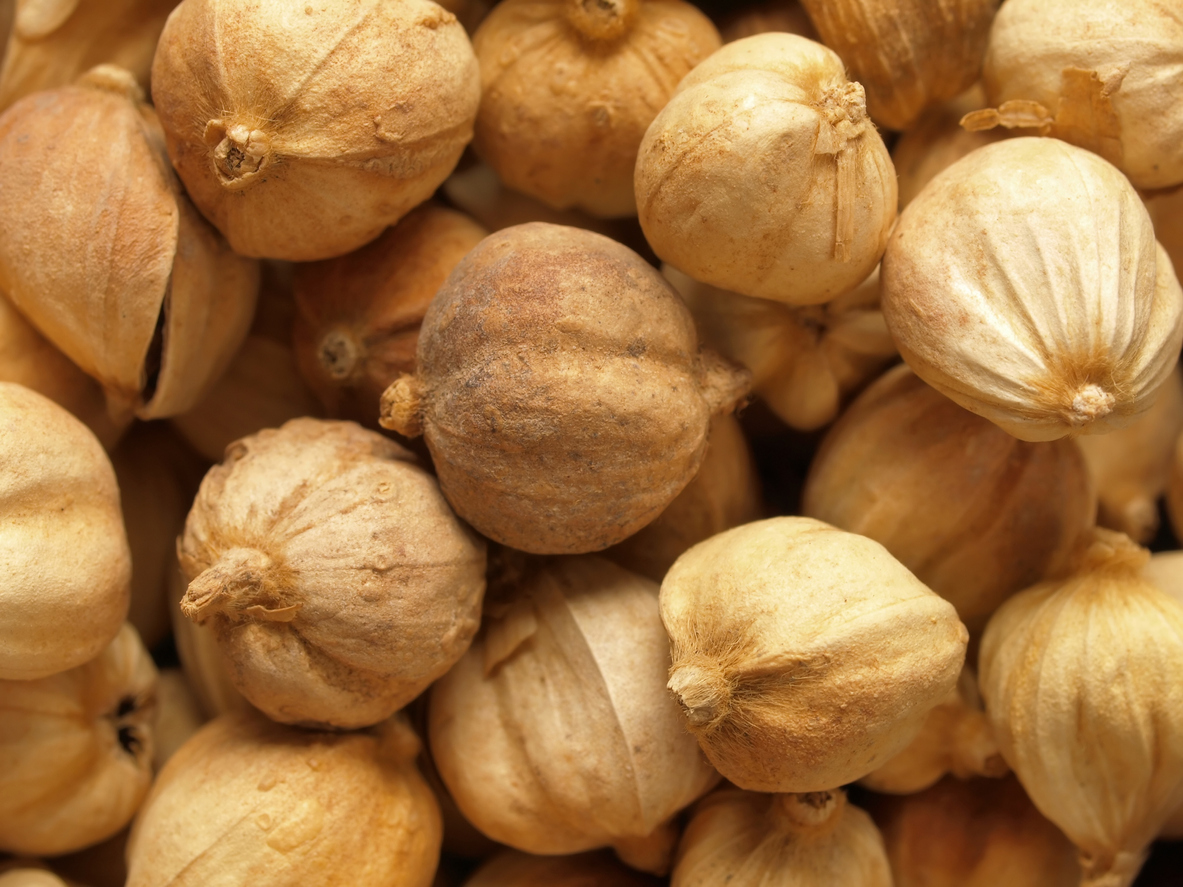The Nutty Marvel: Exploring the Versatility of Candlenut with Wigmore Trading
The Nutty Marvel: Exploring the Versatility of Candlenut with Wigmore Trading
Welcome to a nutty adventure, where we unravel the secrets of one of nature’s most versatile marvels – the candlenut! Prepare to be amazed as we dive into its rich history, culinary uses, and surprising health benefits. In collaboration with Wigmore Trading, we’ll embark on a journey that will leave your taste buds tingling and your mind enlightened. So grab a handful of candlenuts and join us as we explore this extraordinary ingredient that is sure to make you go nuts for its endless possibilities!
Introduction to Candlenut: What is it and where does it come from?
Introduction to Candlenut: What is it and where does it come from?
Candlenut, also known as the “kemiri” nut, is an essential ingredient in many Southeast Asian cuisines. Native to Indonesia and Malaysia, this small cream-colored nut has a unique flavor profile that adds depth and richness to dishes. In this section, we will take a closer look at what candlenut is, its origins, and how it has been used in culinary traditions for centuries.
What is Candlenut?
Candlenut is the seed of the Aleurites moluccanus tree, also known as the candlenut tree. The tree belongs to the spurge family and can grow up to 20 meters in height. The nuts are round with a hard shell that resembles a candle’s shape, hence its name. Inside the shell lies a white flesh that has a slightly sweet and oily taste.
The versatility of candlenuts comes from their high oil content (around 60%) compared to other nuts like almonds or cashews. This oil gives them a creamy texture when blended or ground into paste forms. The flavor of candlenuts is often described as earthy with hints of almond and walnut notes.
Origins of Candlenuts
Candlenuts are native to Indonesia and Malaysia, but they have been cultivated throughout Southeast Asia for centuries. They were introduced to Hawaii by early Polynesian settlers over 1500 years ago and have since become naturalized
The History of Candlenut: From Ancient Times to Modern Day Uses
Candlenut, also known as Aleurites moluccanus, has a rich history dating back to ancient times. It is believed to have originated in the Maluku Islands of Indonesia and has been used for various purposes throughout history. The nut was highly prized by early civilizations for its versatility and nutritional value.
In Ancient Times:
The use of candlenut can be traced back to the ancient Polynesians who used it as a source of food, medicine, and light. They would grind the nuts into a paste and mix it with water to create an oil that could be used as fuel for lamps. This earned them the name “candlenut” due to their ability to produce a bright flame similar to that of candles.
The nut was also a staple in traditional medicine practices in many cultures. It was believed to have healing properties and was often used to treat skin ailments, joint pain, and respiratory issues. Candlenut oil was also used topically as a moisturizer for dry skin and hair.
During Colonial Times:
When European explorers arrived in Southeast Asia during the 16th century, they were introduced to the versatile uses of candlenut by the indigenous people. They were quick to recognize its potential as an excellent substitute for candles, which were expensive at that time.
Nutritional Value and Health Benefits of Candlenut
Nutritional Value:
Candlenuts, also known as kemiri nuts, are native to Southeast Asia and are widely used in Indonesian cuisine. These small, round nuts have a creamy texture and a slightly sweet taste. They are highly nutritious and offer a range of health benefits.
One ounce (28 grams) of candlenuts contains approximately 196 calories, 19 grams of fat (including healthy monounsaturated fats), 3 grams of protein, and only 1 gram of carbohydrates. This makes them a great source of energy for the body.
Candlenuts also contain essential vitamins and minerals such as vitamin B6, folate, magnesium, phosphorus, copper, and manganese. They are especially rich in thiamine (vitamin B1), which is important for converting food into energy and maintaining a healthy nervous system.
Health Benefits:
1. Good for Heart Health:
Candlenuts contain high levels of oleic acid – a type of monounsaturated fatty acid that has been linked to reducing the risk of heart disease. It helps lower bad cholesterol (LDL) levels while increasing good cholesterol (HDL) levels in the body.
2. Promotes Brain Function:
The high content of thiamine in candlenuts is beneficial for brain function as it plays an important role in producing neurotransmitters that aid communication between nerve cells. Additionally, the magnesium present in candlenuts can improve memory function and reduce anxiety.
Cooking with Candlenut: Traditional and Modern Recipes
Candlenut, also known as candleberry or kukui nut, is a versatile ingredient that has been used in traditional cooking for centuries. Its unique flavor and texture make it a staple in many cuisines, especially in Southeast Asian countries like Indonesia and Hawaii. In recent years, candlenut has gained popularity in modern cuisine due to its health benefits and ability to add depth and richness to dishes. In this section, we will explore both traditional and modern recipes using candlenut.
Traditional Recipes:
1. Beef Rendang – This dish originated from the Minangkabau people of Indonesia and is considered one of their national dishes. The rich gravy made from coconut milk, spices, and candlenut gives the beef chunks a melt-in-your-mouth tenderness.
2. Chicken Long Rice – A popular Hawaiian dish, chicken long rice combines shredded chicken with transparent noodles cooked in broth made from candlenuts, ginger, garlic, and onions. It is often served at luaus or family gatherings.
3. Bubur Candil – This sweet dessert soup is commonly found on street food stalls in Indonesia. The chewy glutinous rice balls are cooked in coconut milk flavored with pandan leaves and topped with a sprinkle of grated candlenuts for added crunch.
Unique Uses for Candlenut Beyond the Kitchen
Candlenut, also known as the kukui nut, is commonly used in cooking and baking for its rich flavor and texture. However, this versatile nut has many unique uses beyond the kitchen that you may not have thought of before. In this section, we will explore some surprising ways to incorporate candlenuts into your daily life.
1. Natural Polisher
One interesting use for candlenut is as a natural polisher for wood and leather items. Simply grind up a handful of candlenuts into a fine powder and mix it with a small amount of water to create a paste. Rub this paste onto wooden furniture or leather shoes or bags and let it sit for 10-15 minutes before wiping off with a clean cloth. The oils in the nuts act as a natural conditioner, giving your items a glossy shine.
2. Hair Treatment
Candlenut oil is often used in hair care products due to its moisturizing properties. You can create your own DIY hair treatment by mixing candlenut oil with coconut oil and massaging it into your scalp and hair. Leave it on for 30 minutes before shampooing as usual. This will help nourish your hair, making it soft and shiny.
How Wigmore Trading Sources and Sustains High-Quality Candlenuts
Wigmore Trading is a leading supplier of high-quality candlenuts, known for their versatility and distinct flavor. But what sets Wigmore Trading apart from other suppliers? How do they manage to consistently source and sustain such high-quality candlenuts? In this section, we will delve into the processes and values that drive Wigmore Trading’s approach to producing top-notch candlenuts.
1. Selecting the Best Farms: At Wigmore Trading, sourcing starts at the farm level. They have established long-term relationships with trusted farmers who are passionate about growing quality candlenuts. These farms are located in regions with ideal climate conditions for growing candlenuts, ensuring that only the best quality nuts are harvested.
2. Sustainable Farming Practices: Wigmore Trading prioritizes sustainable farming practices when selecting their suppliers. This means supporting farmers who use environmentally friendly methods of cultivation, without the use of harmful chemicals or pesticides. Not only does this contribute to healthier nuts, but it also promotes responsible agriculture and protects the environment.
3. Handpicked Harvesting: The harvesting process plays a crucial role in determining the quality of candlenuts. At Wigmore Trading, all nuts are handpicked by skilled workers who carefully select only fully matured nuts from each tree. This labor-intensive process ensures that only the best quality nuts make it to market.
Conclusion: Embracing the Versatility of Candlenut
Conclusion: Embracing the Versatility of Candlenut
In this article, we have delved into the amazing world of candlenuts and explored their versatility in various cuisines and beauty products. From being a staple ingredient in Southeast Asian dishes to being used as a natural moisturizer for skin and hair, candlenuts truly are a nutty marvel.
One of the most fascinating aspects of candlenuts is their ability to elevate any dish with its distinct flavor profile. As we have learned, these nuts are commonly used in curries, sauces, and marinades due to their rich and creamy texture. They add depth and richness to any dish, making them a favorite among chefs and home cooks alike.
But it’s not just in savory dishes where candlenuts shine; they also make an excellent addition to sweet treats. Their slightly bitter taste pairs well with chocolate, adding complexity to desserts like cakes, cookies, and brownies. You can also grind candlenuts into a fine powder and use it as a substitute for almond or hazelnut flour in gluten-free recipes.
Aside from culinary uses, the oil extracted from candlenuts has been traditionally used for hair care in many cultures. This oil is rich in fatty acids that help nourish the scalp and promote healthy hair growth. It’s also known for its moisturizing properties that can prevent dryness and frizziness. Many beauty brands have now incorporated candlenut oil into their hair products due to its effectiveness.






Comments are closed.